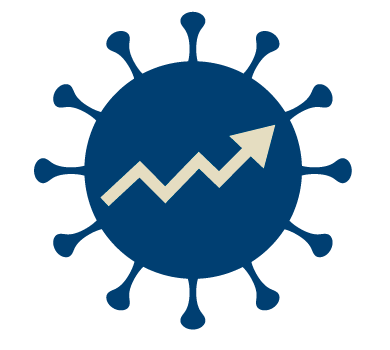Existing Medical Countermeasures
With oseltamivir, peramivir, zanamivir and baloxavir there are at least four influenza drugs suitable for treatment of H5N1 patients. Amantadine and rimantadine are not used anymore due to widespread resistances. Drug resistances remain a concern, but with four drugs available there will be no shortage in the foreseeable future. There are seven H5N1 vaccines and the most recent one was approved in 2020.
Pharmaceutical Research
We can expect amazing progress in the coming years. Five established companies are currently researching influenza mRNA vaccines. This would enable rapid production and modification of pandemic influenza vaccines. Meanwhile several innovative companies are making progress with an ambitious concept: Long-lasting influenza antibodies that can neutralize a broad range of influenza viruses. The antibodies may not only have therapeutic use, but may prevent infections or severe outcomes similar to vaccines, with additional benefits for old and immunocompromised people.
Unknown Factors
Our ability to predict which virus lineages are more likely to achieve sustained mammal-to-mammal transmission or human-to-human transmission is limited. As far as we know, all influenza pandemics have been caused by H1, H2 or H3 subtypes, not H5. It may be that H5 subtypes have an increased difficulty of spreading effectively between humans for unknown reasons. Just recently a natural immune defense against avian influenza viruses based on BTN3A3 has been discovered. We have also recently learned that macaques gain protection from seasonal influenza vaccines.
Vaccination of humans against seasonal influenza (H1N1/H3N2) had increased the antibody response against H5N1 only by a tiny amount. Antibody response to NA of the 2009 pandemic H1N1 virus however correlates strongly with an antibody response to NA of H5N1. This is due to a higher similarity of the NA segments. It is unknown how much actual protection this confers. There may be other positive factors that we simply don't know about yet.
Trend Reversal
Extrapolating trends too far is a common fallacy. Avian influenza so far has been rapidly appearing, spreading, mutating, and disappearing. The CDC has many examples of avian influenza outbreaks, but the most recent and serious one was H5N8 in 2016/2017. While the current spread of H5N1 is without any doubt dangerous and unprecedented, it may subside without causing a pandemic. There are a lot less human infections compared to a decade or two ago. The number of H5N1 infections in wild and domestic birds declined dramatically in the USA (and has risen again). The sudden widespread resistance to Tamiflu is now history. Bird populations may become fewer in numbers and more resistant over time. Biosafety measures may become more widespread and efficient. Mutations may render the virus less dangerous. There are many possible reasons for a trend reversal.
Food Safety
While mammals get H5N1 from eating infected birds frequently, this is a highly unlikely infection route for humans. Similar food safety precautions as for avoiding other food-borne illnesses are sufficient to prevent avian influenza infections, although beef steaks and similar foods would be an exception in case of lower core temperatures. Avian influenza in milk is usually neutralized by pasteurization before it reaches consumers. Avian influenza in eggs can be deactivated by proper cooking at high enough temperatures. The very high lethality and transmissibility of H5N1 among chickens result in quick detection of outbreaks and almost entirely prevent infected chicken meat from reaching consumers. And that is exactly why vaccinating poultry is disputed. A vaccine that doesn't stop H5N1 completely, a "leaky" vaccine, would lead to undetected outbreaks and mutations. Luckily scientists have recently found out that two chicken vaccines are "perfect", a 100% prevention of H5N1 in chickens. Scientists are currently developing genetically modified chickens which would be immune to H5N1.
Preparedness
Avian influenza has been treated as the most likely cause of the next serious pandemic for a long time. A lot of research has been done and the virus is relatively well understood. Biosecurity measures, testing, surveillance, and reporting have intensified. Plans, purchase agreements and production capabilities for medical countermeasures have been prepared over a decade ago. The Covid-19 pandemic has helped to identify weaknesses and improve the preparations. Limited H5N1 vaccine stockpiles exist, at least 20 million doses in the USA. More vaccines doses for stockpiles are being ordered.
Transmission
Influenza viruses are a lot less transmissible than SARS-CoV-2. Public health measures targeting Covid-19, including widespread mask wearing, were effective enough to cancel "flu season" and probably even eradicate Influenza B Yamagata. Public health measures may be sufficient to contain an avian influenza outbreak. Protective masks drastically reduce the personal health risk to a degree where managing the societal and financial risks of a bird flu pandemic becomes more important.
Adaptation
While avian influenza A H5N1 clade 2.3.4.4b manages to spread worldwide by infecting a large number of migrating birds and waterfowl, it is also poorly adapted to other birds, mammals and humans. In fact a mutation enabling much faster replication in mammalian cells was common in the bird population in the older clade 2.2 with a prevalence of 92%, but in clade 2.3 the prevalence is only 1%. This mutation emerges in a few percent (7%/17%) of all infected mammals. A study of highly contaminated poultry workers demonstrates that even contamination with high doses of H5N1 usually doesn't result in human infections. With less than 1.000 documented human cases in the last 20 years the risk of infection is currently very low. Despite several concerning developments on a smaller scale, there is no evidence of H5N1 clade 2.3.4.4b adaptations to mammals circulating widely in the bird population. So far the increasing number of infected mammals and mammalian species seems to be caused by the large number of infected birds, not adaptation to mammals.
